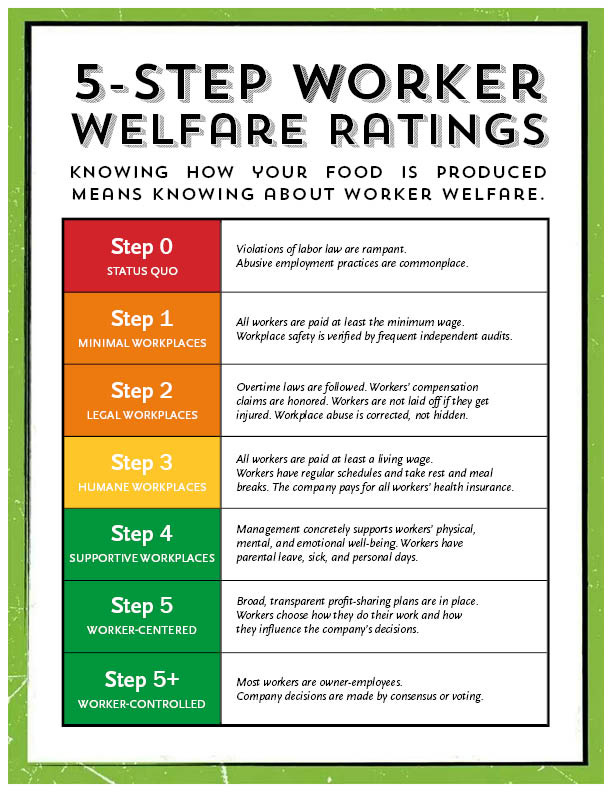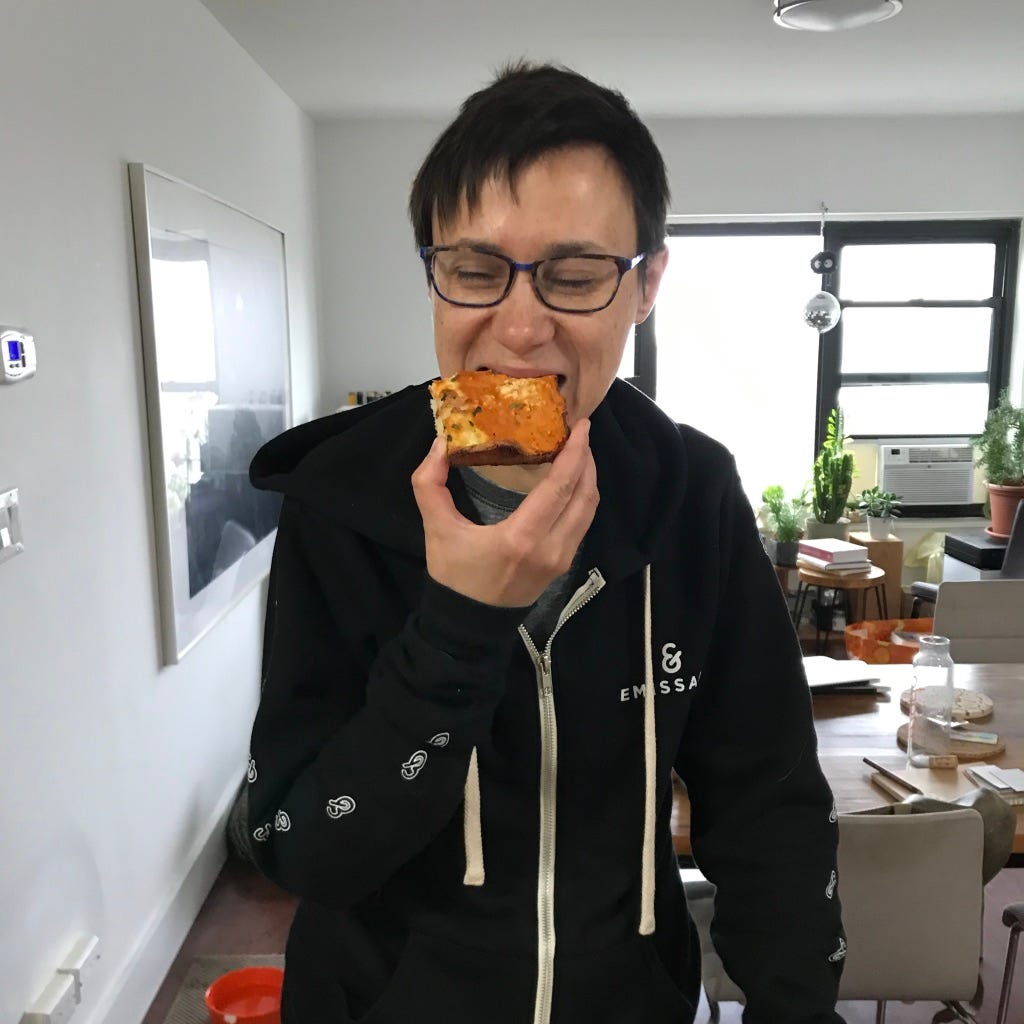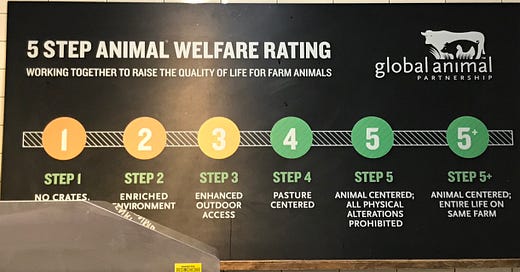Knowing how it's made
If you’ve been in a Whole Foods, you’ve probably seen these signs.

Sorry for the crap photo. Shot in a hurry at my local, so as not to use other copyrighted material. You get the picture.
The organization responsible for these, the Global Animal Partnership, was established by Whole Foods, and at the lower levels these practices aren’t really that different from the highly problematic meat industry baseline. It’s green-washing, puffery, and Whole Foods congratulating itself for doing really not very much - but humane treatment of our livestock is clearly a worthy goal, and so is providing greater transparency into our food system.
It’s telling that Whole Foods feels more comfortable being transparent about the treatment of animals than about the treatment of workers.
There’s no question that people who work in agriculture, food processing, and hospitality frequently endure exploitative, abusive, and flat-out illegal working conditions. There’s no question that these abusive practices persist in large part because the human suffering that puts the food on our tables is distant and invisible. The only question, really, is what it says about our society when we care more about the welfare of livestock than the welfare of the people who feed us.

Robin Scott designed this poster. Text is mine. This image carries a Creative Commons with Attribution license. Additionally, we would like to ask politely that if you are going to do something with this (and we hope you will) that you contact one of us because we’d love to see how people build on this idea.
This isn’t a complete, well-researched set of standards. I’m not an expert on labor law or human rights. I just know we don’t see these signs in Whole Foods, or the Gap, or anywhere else where we buy anything.
I recognize that we frequently have little or no choice in this matter as consumers — I’m not even sure it’s possible for anyone not living on a farm to eat a complete diet without buying something from a company that treats its workers badly. I just wonder what the world would be like if this idea were a little more widespread, if we saw signs like this more often. If you’d like to take this idea and run with it, please do reach out.
On very special occasions, no more than once or twice a year, I make Diana cold pizza for breakfast. This is not a complicated undertaking. I take the pizza out of the fridge and maybe let it temper for ten minutes, then I bring it to her with a cup of hot coffee and revel in her gratitude. As Julia Child said about Chez Panisse, “it’s not cooking; it’s shopping.”

The perfect pizza for this is a standard cheese slice. The tomato sauce should have soaked the dough over the course of a night in the fridge, so there needs to be enough congealed low-moisture mozzarella on top to hold the thing together. Looked at that way, this is no more than a crushed tomato away from the Northern European breakfast of cheese and a roll, perfected in a pizza oven.
She is pictured here with a Detroit style vodka slice, fridge cold, from Lions and Tigers and Squares.
If you’ve enjoyed the stories so far, please consider sending a link or an issue along to someone you know who might find this interesting, or consider posting something about this on social media. There’s nothing like word of mouth.
Thank you for reading let them eat cake, a weekly newsletter about food systems and food. It’s socialist at heart, but it’s not this socialist every week. And as always, a super-special thank you to my pre-release readers, Jen Thompson and Diana Kudayarova.
best,
tw
p.s. I’d love to buy you a coffee. Drop me a line!


